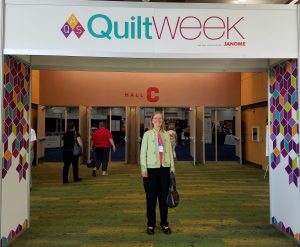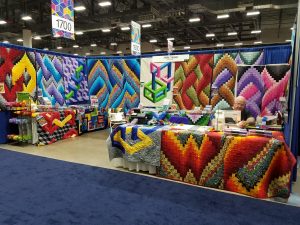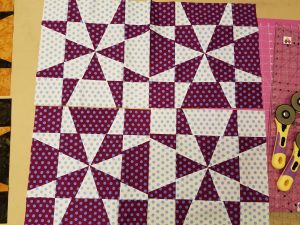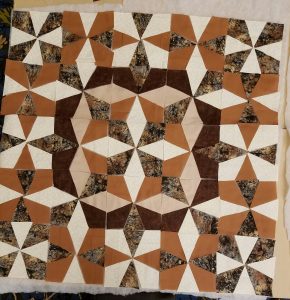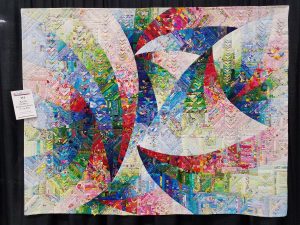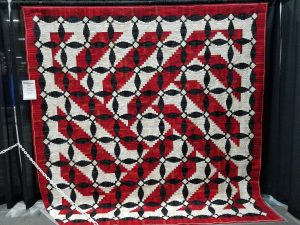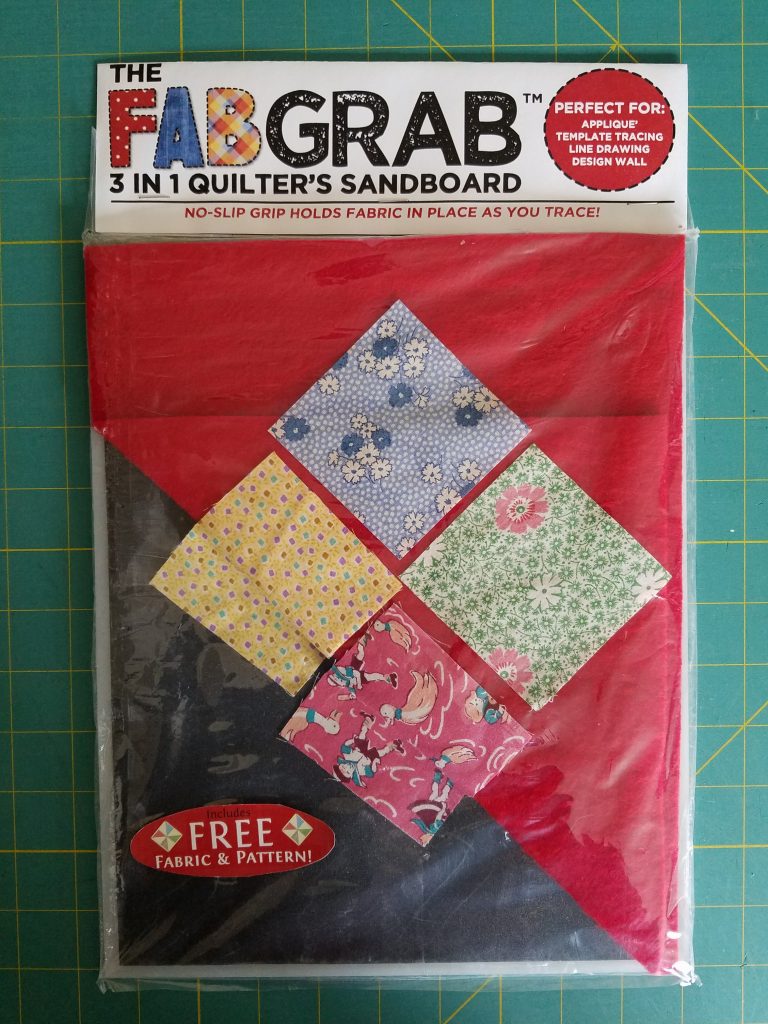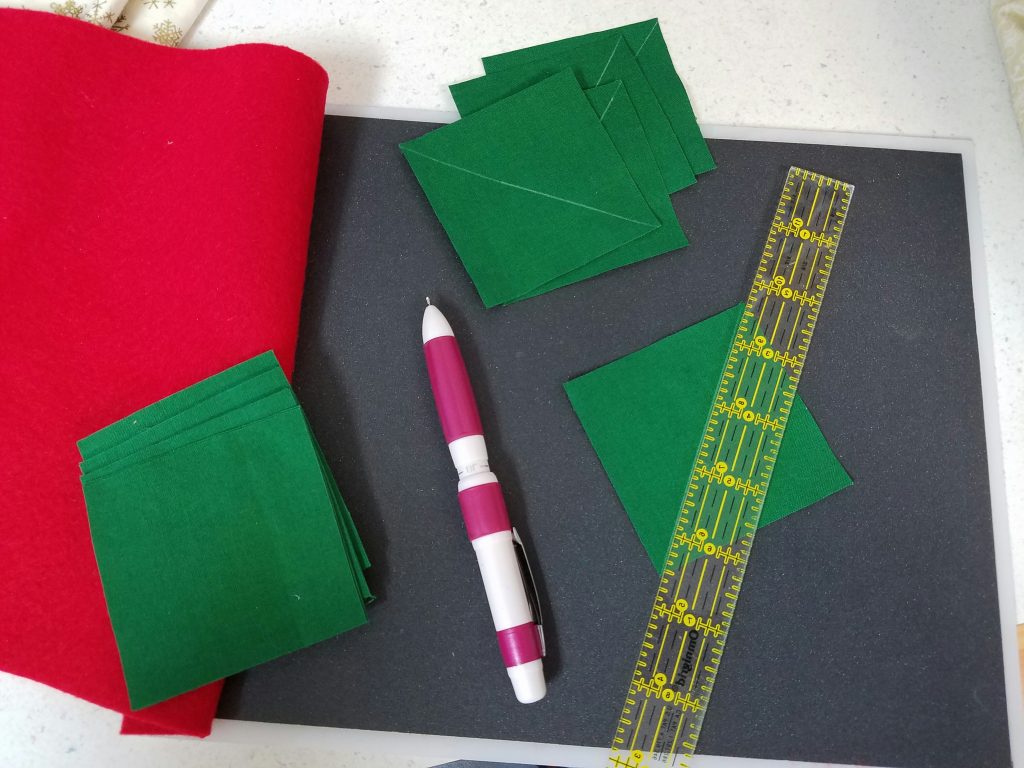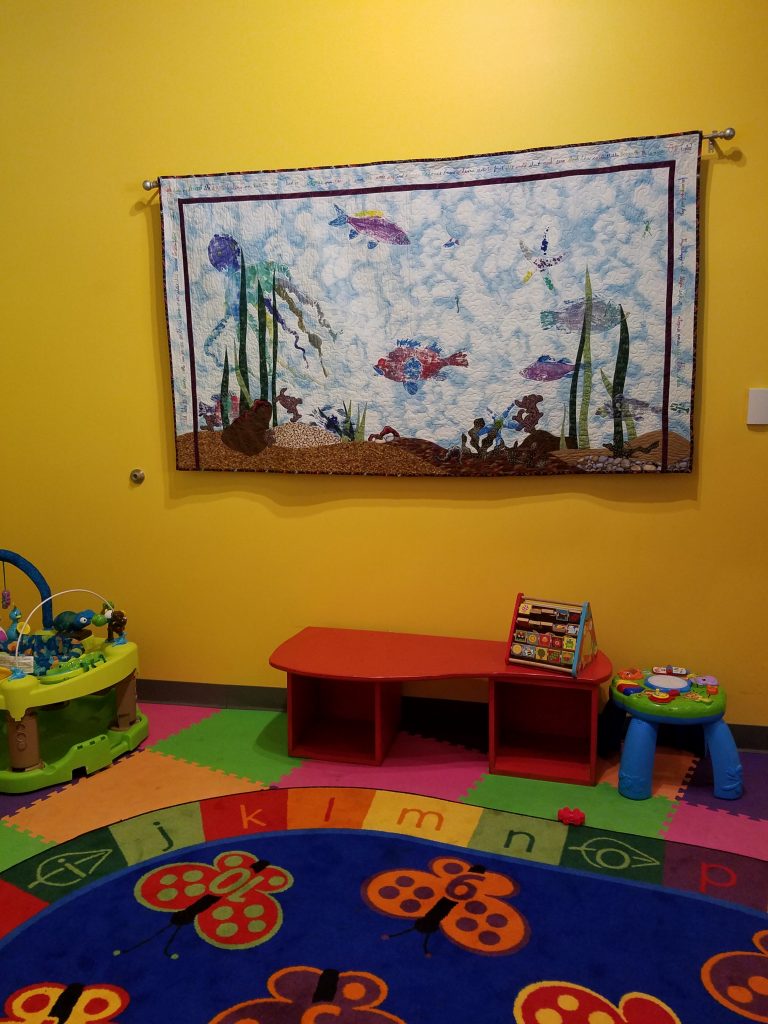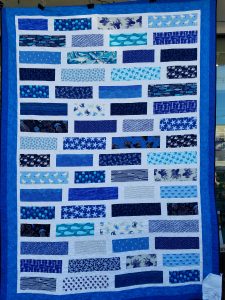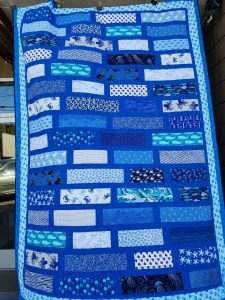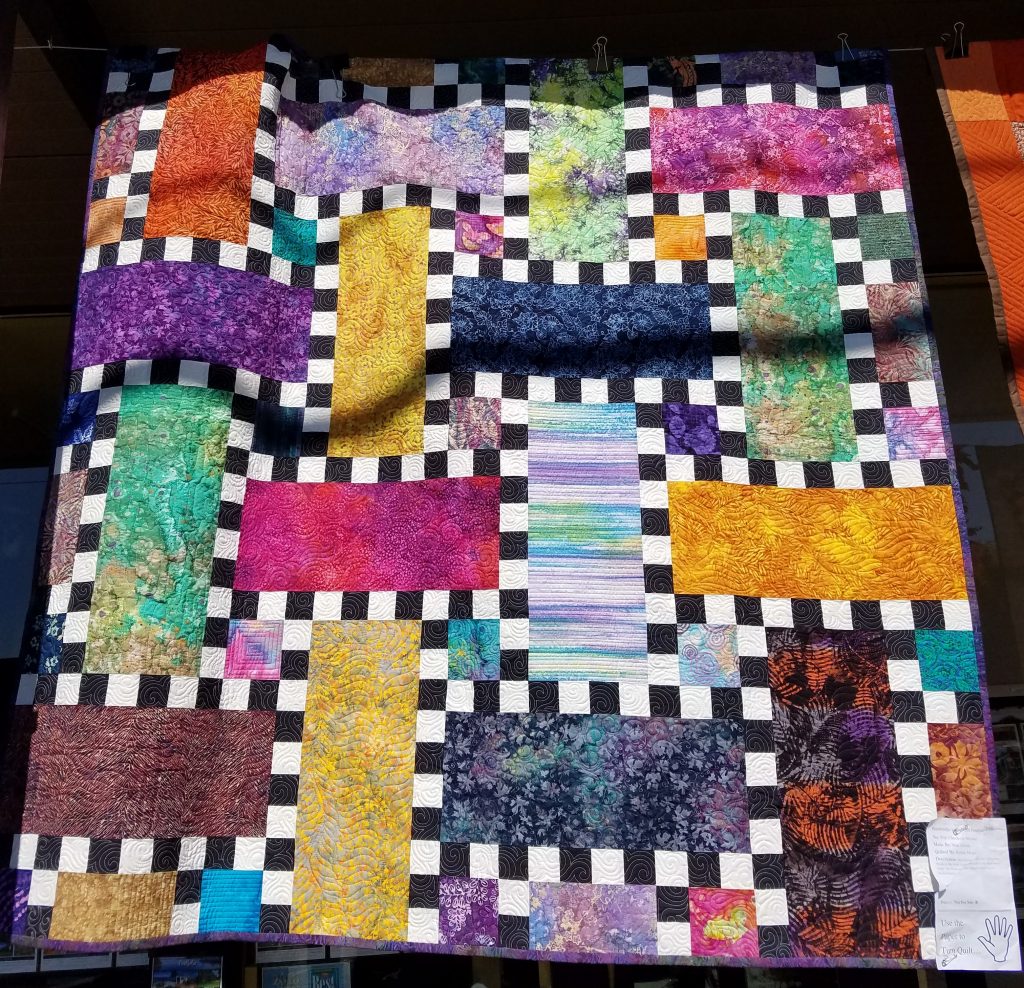Earlier this month I spent four days teaching at the AQS QuiltWeek in Des Moines, IA. These AQS events have three major components: the quilt exhibits which include a national level quilt show and several special exhibits; the booths selling every imaginable quilting gadget, machines and of course fabric and notions; and a wide offering of classes and lectures.
Here I am at the entrance of the exhibit hall in the Iowa Events Center. The other picture shows a particularly colorful booth hosted by Fabric Therapy, a store from Fife Lake, MI. There were around 115 booths, and plenty of quilters busy shopping. Two of the classes I taught were my Template-free Kaleidoscope Puzzle Quilts and the Template-free Op-Art Kaleidoscope Quilts. Examples of work by my students are shown below.
My class sizes were very small, but the students who came were enthusiastic and we had a very enjoyable time. It turned out that the other teachers had low sign-ups for their classes too. The excuse that we were given, was that this summer was very wet which meant that the harvest was late in IA and many quilters were on their farms still harvesting instead of attending the show. I have no way of knowing how much this accounted for the low turn-out, but suspect that other factors are involved. The industry is clearly changing and the AQS, which has been over-extending itself, will only have six national shows next year instead of eight. They are introducing a fall show in Paducah which I hope does not dilute the spring Paducah event that is so special. AQS QuiltWeeks will only have five locations instead of eight (Daytona Beach, Lancaster, Paducah, Grand Rapids and Des Moines, cutting out Chattanooga, Phoenix and Syracuse). It will be interesting to see how it all goes moving forward.
These two quilts were in the AQS judged quilt show. Neither was an award winner but they both appealed to me. They both have a great sense of movement and the use of contrasting values make the designs look stunning. On the left is Kan Oh Chi Rai – Prediction Study of the Past by Yoshiyuki Ishizaki from Ahiya City, Japan. On the right, Pioneer Log Cabin pieced by Diane Bacon of Humbolt, IA, and long-arm quilted by Rhonda Post. Diane used a pattern from Judy Martin’s book, Extraordinary Log Cabin Quilts.
